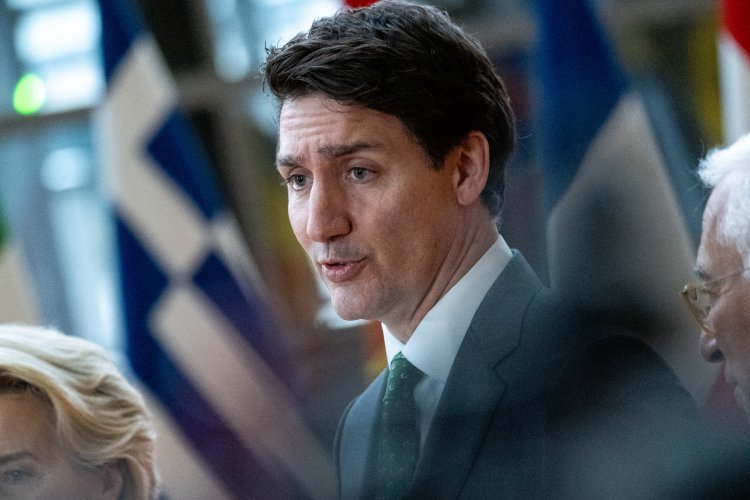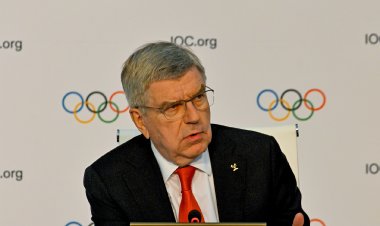Trudeau Went Missing During Canada’s Election — and His Party Was Elated
Liberal Leader Mark Carney, his replacement, reinvigorated the party's base during an election campaign that was drastically altered by Donald Trump.

His absence during the campaign leading up to Election Day was met with quiet relief by Liberal Party candidates on the ground.
Trudeau announced his departure in January after being urged to step aside by his party, which feared significant losses in the upcoming elections.
“He’s all we’d be talking about,” remarked Liberal candidate Rob Oliphant regarding his former leader and the potential consequences of Trudeau remaining in power.
The combination of Trudeau’s resignation and Donald Trump’s political resurgence paved the way for the unexpected rise of Liberal Leader Mark Carney — described by Oliphant as “a match to deal with the situation.”
Carney assumed leadership and the role of prime minister on March 14, and sensing a revival in the party’s fortunes, he quickly called for an election. Trump’s trade war and mockery of Canada as a “51st state” have heightened the stakes for Election Day, with many viewing it as a generational choice.
During his brief time as prime minister, Carney began to distance himself from the policies of the Trudeau administration. On the campaign trail, the former central banker positioned himself as someone with the economic credibility necessary to navigate Trump’s tariffs and confront the president's provocations.
Although Conservatives attempted to associate Carney with his predecessor, the Liberal base was reinvigorated, attracting back those who had distanced themselves under Trudeau.
“I was a big supporter of Trudeau in his early years, but I got very disillusioned. I felt the government was making bad decisions for the last two or three years, to the point that I resigned my membership in the party,” said Eric Rothschild, a Toronto resident. He is now volunteering for the party in a competitive district.
Trudeau, who is reportedly renting a residence in Ottawa, has remained absent from the Liberals’ national campaign. His only appearance was to support his former deputy chief of staff in her electoral district, which he held for 13 years.
Midway through the campaign, Trudeau’s only exit interview, which aired on PBS and was recorded on March 10 before he left office, received little media attention and did not detract from Carney’s campaign.
“I’m feeling serene about everything that I got done. I’m feeling excited about being able to spend more time with my kids, excited about, you know, looking for other ways to contribute,” Trudeau stated on “Canada Files.”
“But I think I had a good run, and I’m feeling good about it, and glad to be handing off a party that’s healthy, to a strong leader that is going to keep fighting for the things that matter.”
Shortly after leaving the Prime Minister’s Office for the last time, Trudeau shared a selfie of himself shopping for home goods at Canadian Tire, a retail chain reminiscent of Walmart.
Following that, he receded from the political landscape, which many Canadians have found to be a positive development.
“I didn't like how he talked to people like they're idiots. His tone, I was like ‘please don’t talk to us like that,’” expressed Sinead Zalitach, a Toronto voter who plans to support the Liberals under Carney in a district where Conservatives are attempting to gain ground.
For nearly two years, the Liberals lagged behind the Conservative Party by substantial margins in polls. However, with Trudeau's departure, the party began to recover, capitalizing on Canadians' concerns regarding Trump.
One of Carney’s first actions was to eliminate the Liberal government’s consumer carbon price.
“He knew a big part of Canada didn’t like that policy, so he withdrew it. That’s what good politics is, and what a good prime minister will do,” stated Jerome Lai, a resident of a suburban Toronto district that is heavily contested.
Lai, wearing a Canadian jersey emblazoned with “Never 51,” had the opportunity to get it signed by the prime minister at a recent rally. He mentioned he’s voting Liberal because he believes Carney's experience managing two central banks is essential for safeguarding Canada’s economy against “the orange bogeyman from the U.S.”
During the latter years of Trudeau’s three terms, which included the Covid-19 pandemic, he faced widespread discontent over rising living costs and high immigration levels.
Conservative Leader Pierre Poilievre has tapped into these sentiments with a “change” platform, arguing that Carney would simply be “just like Justin” and attributing the blame for a “lost Liberal decade” to Trudeau’s policies. Yet, this message appears to be failing to resonate with many Liberal supporters.
A recent exclusive poll by Focaldata for PMG shows that Carney has effectively positioned himself apart from Trudeau. Approximately 46 percent of voters surveyed believe Carney “mostly represents something different from Justin Trudeau’s leadership,” indicating they will base their voting decision primarily on Carney’s recent leadership rather than the party’s long record.
This sentiment is echoed by Toronto retiree Ljiljana Tosic, who indicated she was never a supporter of Trudeau.
“I didn’t really have trust in him,” she remarked. “I like Carney because he has experience.”
Olivia Brown for TROIB News
Find more stories on Business, Economy and Finance in TROIB business












